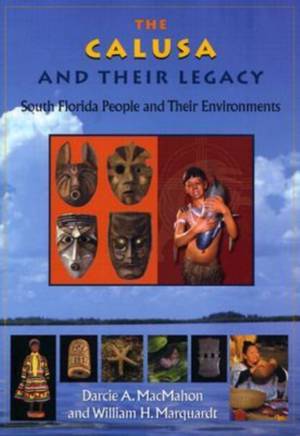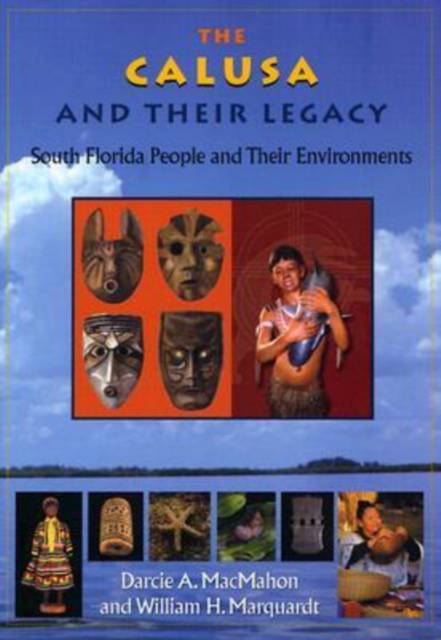
- Afhalen na 1 uur in een winkel met voorraad
- Gratis thuislevering in België vanaf € 30
- Ruim aanbod met 7 miljoen producten
- Afhalen na 1 uur in een winkel met voorraad
- Gratis thuislevering in België vanaf € 30
- Ruim aanbod met 7 miljoen producten
Zoeken
The Calusa and Their Legacy
South Florida People and Their Environments
Darcie A Macmahon, William H Marquardt
€ 55,95
+ 111 punten
Omschrijving
This history, rich with photographs and colorful drawings of the remarkable Calusa Indians who controlled all of south Florida when Europeans first arrived in the New World, presents a vivid picture of the luxurious natural environment that sustained the Calusa--the teeming estuaries along Florida's coasts, which have supported people for thousands of years. The Calusa were the last native Florida Indian people to succumb to colonization, but by the mid-1700s they had disappeared entirely. This book describes the artifacts they left behind and the plants and animals that inhabited the landscape and the underwater world of their ecosystem. It also discusses their traditions that survive to the present day among modern fisherfolk and the vibrant culture of Native Americans in south Florida--the Seminole and Miccosukee peoples. The strength of this book is its dual treatment of both culture and environment. The authors' premise is that culture affects every aspect of people's existence and that to understand a culture, one must first appreciate the environment in which it develops. By learning about both, modern citizens will be better equipped to make the right decisions for wise stewardship of the earth.The Calusa and Their Legacy will inspire readers to value south Florida's multicultural history and ecology. It is written for a broad audience of all ages (from elementary schoolers to senior citizens) and all educational levels. It will be enjoyed by environmentalists, eco/heritage tourists, and everyone interested in understanding a sense of place in the natural world. The book's dramatic and authentic illustrations of Calusa life were created by artists working at the Florida Museum of Natural History in Gainesville, where a major permanent exhibition has interpreted this story since 2002.
Specificaties
Betrokkenen
- Auteur(s):
- Uitgeverij:
Inhoud
- Aantal bladzijden:
- 240
- Taal:
- Engels
- Reeks:
Eigenschappen
- Productcode (EAN):
- 9780813027739
- Verschijningsdatum:
- 31/12/2004
- Uitvoering:
- Hardcover
- Formaat:
- Genaaid
- Afmetingen:
- 178 mm x 254 mm
- Gewicht:
- 707 g

Alleen bij Standaard Boekhandel
+ 111 punten op je klantenkaart van Standaard Boekhandel
Beoordelingen
We publiceren alleen reviews die voldoen aan de voorwaarden voor reviews. Bekijk onze voorwaarden voor reviews.











